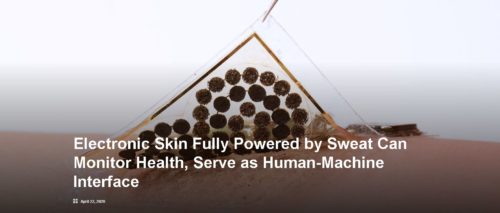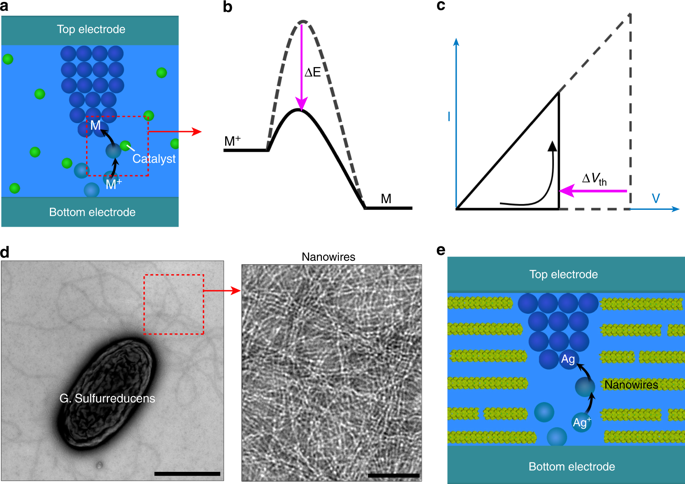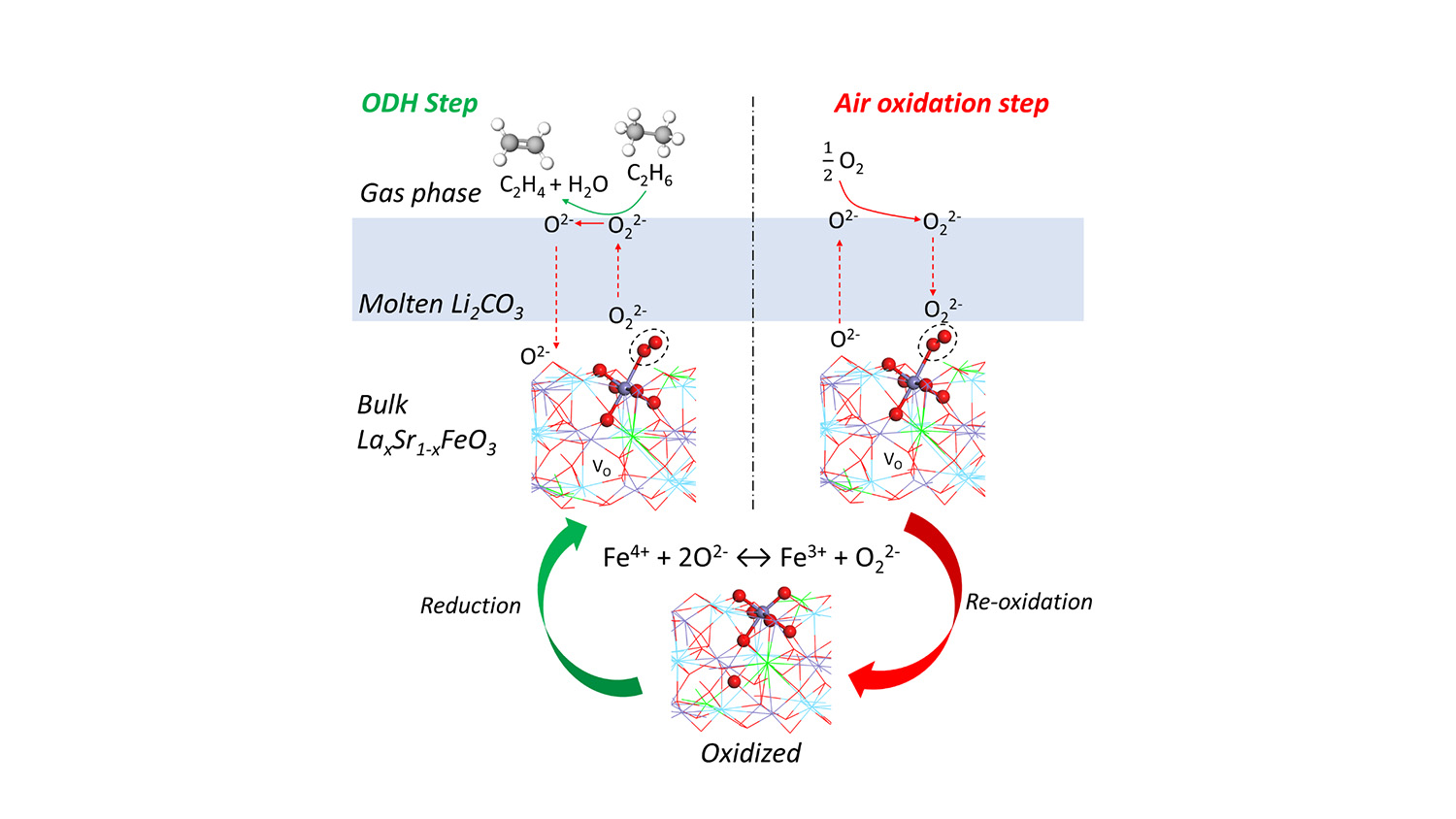(Electronic Skin Fully Powered by Sweat Can Monitor Health, Serve as Human-Machine Interface)
2020/4/22 カリフォルニア工科大学(Caltech)

・ Caltech が、汗の成分をエネルギー源として稼働する電子スキン(e-skin)を開発。
・ 柔軟なゴム製で心拍、体温、血糖値、代謝産物や筋肉を制御する神経信号に至るまで、様々な健康状態をモニタリングするセンサーを埋め込み、皮膚に直接貼り付けて使用できる。
・ エネルギー供給は、ウェアラブルデバイスの主要な課題の一つ。バッテリーをはじめ、太陽電池や身体の挙動からのエネルギーハーベスティング等の手段が採用されているが、同大学ではウェアラブルの稼働に充分なエネルギーを汗から取り出すことに成功した。
・ 人間の汗は、特に運動時の筋肉から代謝プロセスの副生物として生産される有機化合物の乳酸を高濃度で含んでいる。同 e-skin に内蔵したバイオ燃料電池がこの乳酸を吸収して空気中の酸素と結合させ、水とピルビン酸を排出。センサーや Bluetooth デバイスの稼働に充分な電力を提供し、同 eskin からセンサーの情報をワイヤレス送信する。
・ 同バイオ燃料電池は、白金/コバルト触媒を埋め込んだカーボンナノチューブと、乳酸の分解酵素を保持するコンポジットメッシュより構成。数日間にわたり人間の汗から最大で数 mW/㎠の安定したエネルギーを継続して出力できる。
・ バッテリーフリーの電子スキンシステムの多くでは、近距離無線通信(NFC)が主に利用されているが、極めて短い距離間でのエネルギー送信とデータの読み取りのみが可能。Bluetooth による通信ではエネルギーをより多く消費するが、より広範囲の通信手段として実際の医療やロボットアプリケーションで役立つ、より効果的なアプローチと考える。
・ 同 e-skin を多目的に利用するため、多種類の埋め込みセンサーの開発を予定。同 e-skin のシステムは、ウェアラブルバイオセンサーに加え、ヒューマン・マシーン・インターフェイスとしての利用も可能。同システムのプラットフォームで収集したバイタルサインや分子情報が、次世代人工義肢の設計と最適化に貢献すると考える。
・ 本研究には、Caltech のスタートアップグラント、Rothenberg Innovation Initiative(RI2)プログラム、Carver Mead New Adventures Fund および米国立衛生研究所(NIH)が資金を提供した。
URL: https://www.caltech.edu/about/news/electronic-skin-fully-powered-sweat-can-monitorhealth-serve-human-machine-interface
<NEDO海外技術情報より>
(関連情報)
Science Robotics 掲載論文(アブストラクトのみ:全文は有料)
Biofuel-powered soft electronic skin with multiplexed and wireless sensing for human-machine
interfaces
URL: https://robotics.sciencemag.org/content/5/41/eaaz7946
Abstract
Existing electronic skin (e-skin) sensing platforms are equipped to monitor physical parameters using power from batteries or near-field communication. For e-skins to be applied in the next generation of robotics and medical devices, they must operate wirelessly and be self-powered. However, despite recent efforts to harvest energy from the human body, self-powered e-skin with the ability to perform biosensing with Bluetooth communication are limited because of the lack of a continuous energy source and limited power efficiency. Here, we report a flexible and fully perspiration-powered integrated electronic skin (PPES) for multiplexed metabolic sensing in situ. The battery-free e-skin contains multimodal sensors and highly efficient lactate biofuel cells that use a unique integration of zero- to three-dimensional nanomaterials to achieve high power intensity and long-term stability. The PPES delivered a record-breaking power density of 3.5 milliwatt·centimeter-2 for biofuel cells in untreated human body fluids (human sweat) and displayed a very stable performance during a 60-hour continuous operation. It selectively monitored key metabolic analytes (e.g., urea, NH4+, glucose, and pH) and the skin temperature during prolonged physical activities and wirelessly transmitted the data to the user interface using Bluetooth. The PPES was also able to monitor muscle contraction and work as a human-machine interface for human-prosthesis walking.


